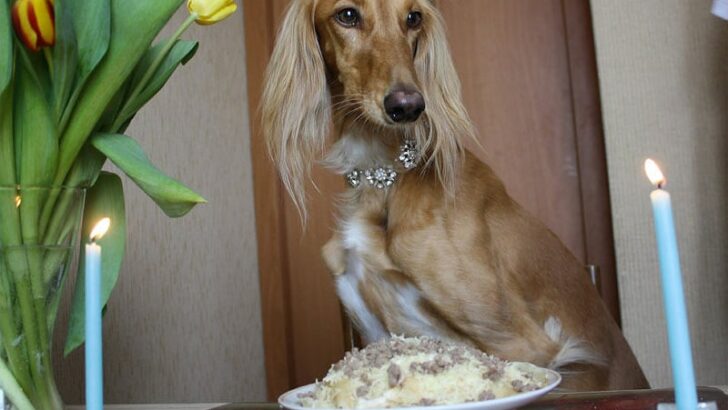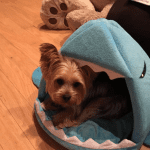- The 10 Best No-Jump Dog Harnesses For Inspired Dogs - July 16, 2022
- Cheaper Alternative to Blue Buffalo Dog Food - July 15, 2022
- Healing From Within: The Best Dog Foods for Hypothyroidism - January 9, 2022
We all love to give our dogs the love and attention they want. Part of being a responsible and caring dog parent is knowing what foods are good and what foods have the potential to harm your dog. After all, your pooch just knows something smells or tastes good, they don’t know always know if it’ll actually harm them. Ultimately, it’s your job to protect them from the plethora of dangerous foods out there that tempt and taunt. ScoutKnows compiled this list of foods that you need to keep away from your dog, followed by a list of foods they can enjoy.
A little education goes a long way towards preventing dog illness and harm from eating foods you yourself might enjoy. Some of the items on this list may come as a bit of a surprise.
Foods that are Bad for Dogs
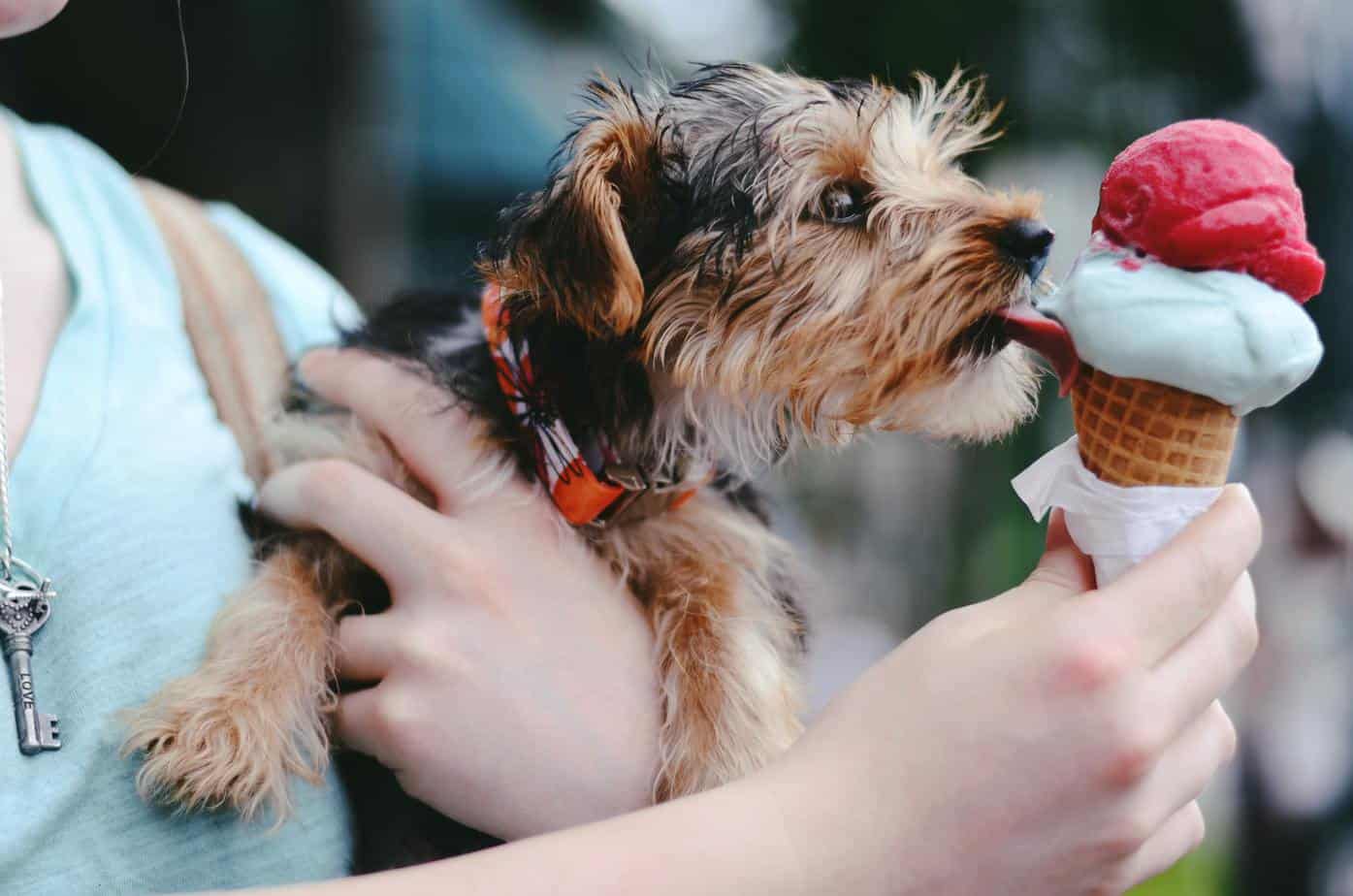
Xylitol
This popular artificial sweetener is found in a lot of candies and gums. Small dogs and toy breeds are most susceptible. Even old gum that is dropped on the ground can be a source that can cause harm. Throw gum into the trash rather than on the ground, or choose products that don’t have xlitol in them at all.
Avocado
Hold the guacamole when it comes to your pooch. Avocados cause diarrhea, constipation, and vomiting when consumed in the right amounts. Some dogs can eat a little and not have any major effects, while others will have a severe reaction. It is better to be safe than sorry when it comes to feeding avocado. Smaller dogs are most easily affected.
Alcohol
While there are stories out there about dogs loving beer or Bailey’s Irish Cream, it is extremely harmful to give them alcohol in any form. Dogs do not process alcohol like people, and even a small amount can lead to alcohol poisoning. Sweet liquors taste great but the high alcohol content can quickly cause alcohol poisoning, especially in small dogs.
Onions
Onions are lurking in a lot of foods. Potato chips alone might not be so bad for a dog in small doses, but a lot of them have onions in them for flavor. While you might not be feeding Fido a big dose of onions, salty snacks can still have enough to cause discomfort and possible kidney damage, especially in the long term.
Garlic
There is a debate about garlic and toxicity to dogs. Small amounts are not a major concern, but if they consume a lot it can cause stomach problems, weakness, drooling, pale gums, and lethargy. Garlic is hiding in a lot of cooked meals, so if leftovers smell garlic-like, then it is best to just throw out the leftovers.
Coffee, Tea, and Caffeine
Caffeinated beverages can cause vomiting, diarrhea, and difficulty breathing. If a large amount is consumed even death can occur. Caffeine is most likely found in coffee, tea, and soda but some health supplements or energy drinks contain it too.
Grapes and Raisins
Like many foods that are toxic to dogs, there is often not a clear reason what causes the reaction. While grapes and raisins are well documented as causing vomiting, diarrhea, tremors, seizures, and kidney failure that can be fatal. Grapes and raisins are nothing to mess around with when it comes to your dog. If they eat them, go to the vet.
Milk
Any milk heavy product is apt to cause diarrhea and other issues for your pooch. It might be a hot day but avoid letting your furry buddy enjoy that ice cream. If you want your dog to have a frozen treat then there are dog ice creams that are fine treats.
Macadamia Nuts
These nuts are really rich in fats which can make a dog have an upset stomach. In addition, macadamia nuts have a toxin in them that little is known about. This toxin can cause neurological problems for your dog and it can only take a few nuts to cause major problems. These nuts are most often found in nut snack mixes and baked goods like cookies.
Chocolate
Theobromine is the ingredient in chocolate that makes it toxic to dogs. The level of toxicity is directly related to the weight of the dog and just how much chocolate gets consumed. If your dog snuffles up two chocolate chips it probably isn’t going to have a noticeable effect. A Chihuahua eating a whole Hershey bar, however, is another story.
Bones
There are a lot of bone treats out there and plenty of us have leftovers after meals that look mighty tasty and inviting to a dog. Cooked chicken bones in particular are notorious for cutting mouths or becoming painfully lodged in the throat or intestinal tract. Large dogs are not immune to these issues either. Bones can cause cuts and damage to your dog’s teeth.
Peaches and Stone Fruits
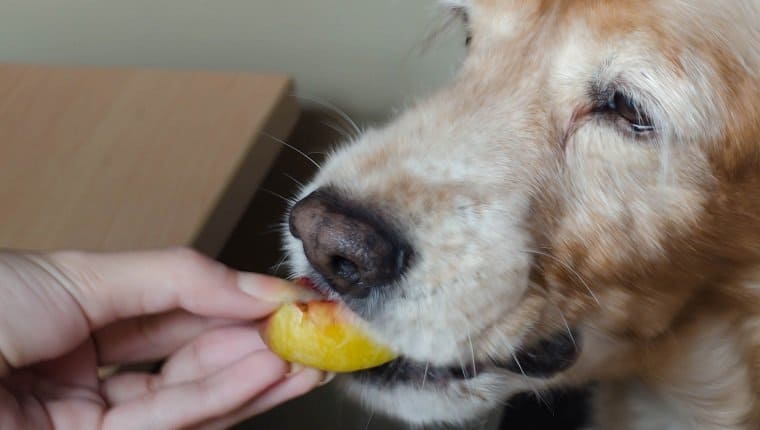
In the case of peaches, the pits contain cyanide so if your dog eats one they are being slightly poisoned. While one might not hurt a large dog, a smaller dog may have some problems. Of course, the more is eaten the worse the issue. There is also the problem of peach pits and stones becoming lodged in the digestive tract.
Raw Eggs
Pets can get salmonella poisoning just like people. Raw eggs are a major source of salmonella poisoning so they should never be given to a dog. At the same time, if your pooch finds an egg and eats it there is no need to panic but you should keep an eye on them for nausea and vomiting or other signs of stomach distress.
Raw Meat and Fish
Raw meat and fish can harbor bacteria and parasites. Even though raw food diets have increased in popularity over the years, they aren’t right for every pet. Before feeding raw, make sure you have a long talk with your veterinarian. In the meantime, always cook meat or fish and remove any bones before serving it to your pet.
Foods High in Sugar
Dogs are not naturally adapted to a high sugar diet. Just think how little sugar is found in the wild. Since sweets taste good and are different to dogs, they are very attracted to them. Once a dog gets a taste for sweets they will continue to seek them out, so the best thing to do is just avoid ever offering them to a dog in the first place.
Bread Dough With Active Yeast
Unbaked dough can puff up a lot. If your dog eats it, they can experience pressure in their stomach that can cause a lot of discomfort.
Citrus Peels
While the inside of citrus is not known to be harmful, the peels contain high levels of oils and citric acid that can lead to brain, spinal cord, and other central nervous system problems. This means you should be careful not to just drop peels on the ground if eating them outside. Dogs love to forage, and many people assume incorrectly that peels are not going to be appealing to a dog that is snuffling around.
Corn on the Cob
While corn itself is not harmful, the cob is a real problem because it does not digest. This means a corn cob can lodge in your dog’s intestinal tract and create a blockage serious enough to prompt a very uncomfortable vet visit and possibly surgery. Some dogs are just the right size to get cobs jammed in their mouth or throat causing them pain and possible choking.
Raw and Green Potatoes
While cooked fresh potatoes are okay, never feed dogs raw potatoes or any that have a green tint. Raw and green potatoes have high levels of solanine, which is used by the potato to repel insects and pests. In dogs, however, it’s a lot less beneficial and can cause some major problems, such as decreased heart rate and blurry vision.
Aloe Vera
While this is not normally consumed as a food, it is a common ingredient in health supplements. Just make sure that you don’t share that smoothie with your dog and keep plants out of reach of chewing. While aloe is not fatal, it does lead to major diarrhea.
Cheese
Cheese is a popular people food and dogs often love it too, but you might want to think twice about feeding them too much cheese. A little may not be that big a deal, but too much can cause gas, diarrhea, and vomiting. Some breeds tolerate cheese better and have the enzymes to break it down (much like some people), while others just can’t.
Bacon
As much as your dog doesn’t want to hear it, bacon can cause problems for some dogs. The extra fattiness can cause pancreatic issues that can lead to organ failure. Too much fat is just not okay for a dog. If your dog gets a piece or two then you don’t need to panic, but don’t make a habit of feeding a lot of fatty meats to your dog.
Foods You Can Share With Your Dog
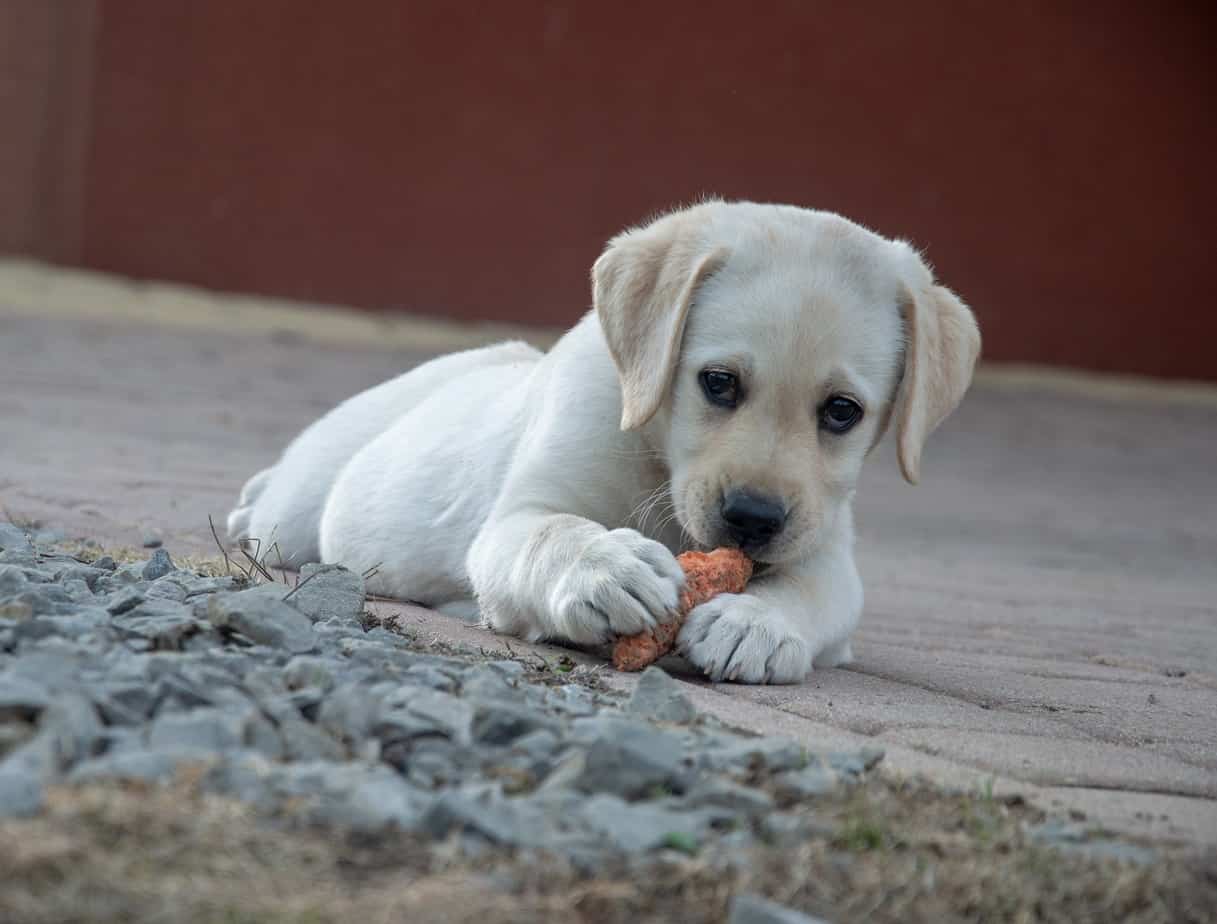
Pasta and Rice
Dogs often love pasta and rice. In fact, a lot of good quality dog foods use rice instead of wheat, corn, or soy. A bit of beef bouillon or broth on some rice can be highly appreciated by a dog.
Carrots
The crunch of carrots is appealing to some dogs. Cooked carrots are sweeter than what a lot of dogs are used to eating, so they can be fed as either a treat or a regular part of a balanced diet.
Cucumbers
The cool crunchiness of cucumbers is definitely something you can enjoy with your dog. You could even put a little bit of beef flavor on them to make them a tasty low calorie treat that your dog will enjoy.
Corn off the Cob
A lot of dog food has corn in it, it’s become a staple of the average dog’s diet. Experts do say, however, that too much corn adds a lot of calories and is a sign of cheap filler in many dog foods. Leftover corn in moderation, though, can be a sweet little treat. Just make sure that all the cob is removed to avoid any trouble.
Beans
Beans have a lot of lean protein in them, so they are a fabulous choice for dogs. Just like with people, they can lead to some gassiness so don’t go overboard with them.
Winter Squash
Squash offers a texture and sweetness that a lot of dogs simply don’t get very often. If you garden a lot you may find that you sometimes have more squash than you know what to do with. Cooking these up for your dog can stretch out their dog food a bit by providing a nutritious, tasty filler.
Peanut Butter
If you are tired of using really expensive spray treats to fill up Kong toys, or just want to make a tasty dog biscuit a lot better, then slather on some peanut butter and your dog will love you for it.
Bananas
Dogs just love bananas. Dried banana chips are an especially good treat that can be used for positive reinforcement training. A big bag of banana chips are very inexpensive and low calorie enough to use for treats for training , play time, or rewards.
Bread
Old bread doesn’t need to go in the trash can. Giving some to your dogs is okay, but be aware that bread is very high calorie so if you need to watch your dog’s weight, make sure to limit the bread.
Apples (Without Seeds)
Apple slices are good, natural dog treats. Just make sure to take out seeds and cores. Dried apple slices are a good crunchy treat that most dogs will love.
Blueberries
These little wonder fruits have a ton of flavor and antioxidants. In fact, some high-quality dog foods include some blueberries in their ingredients list. Beware if you have blueberry bushes growing down low, because once your dog finds out he might just pick your crop for you.
Cooked Eggs
Eggs are a really good source of protein for dogs, and they find them delicious. As long as you cook them properly, they are not bad to feed your dog. Scrambled eggs are a good way to give your dog a treat on top of their regular kibble.
Tips For Keeping Toxic Foods Away From Dogs
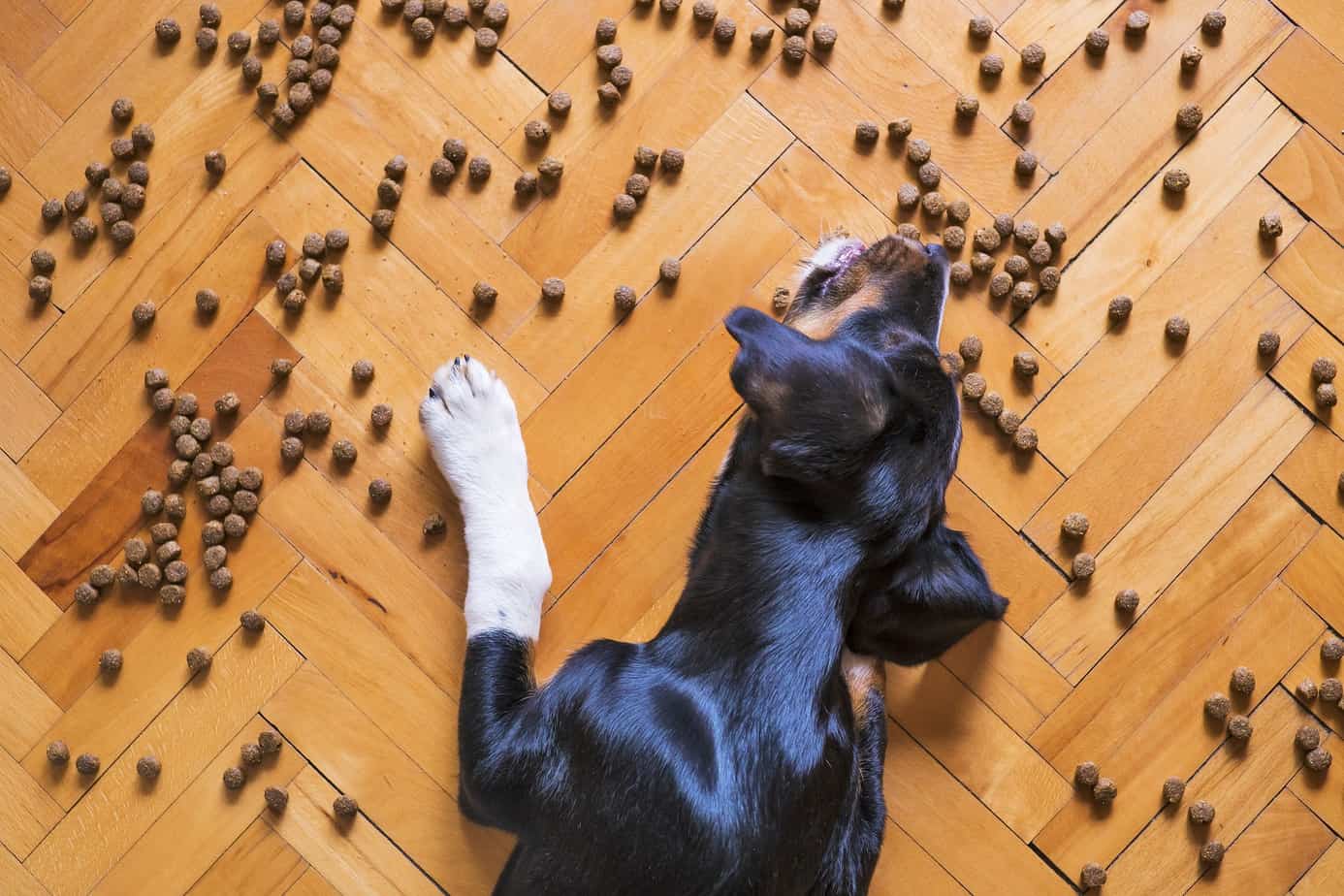
1. Keep Compost Bins and Pits Contained or Out of Reach
Composting is a great thing to do for your garden but all that decomposing food is just too tempting for most pooches. A compost heap or bin can have a big combination of foods that can hurt your dog or other dogs in the neighborhood. Community gardens and other places need to take precautions to keep out wandering pets.
2. Keep Trash and Kitchen Waste Contained
Dogs have noses that can smell something delicious a long way away. This means you need to have trash bins and cans that have lids that your dog cannot get off. Make sure to take out the trash regularly. Those in rural areas without garbage pickup should make sure that any garbage area is secure so that pets or small wildlife can’t rip into bags.
3. Educate Your Family
It is amazing to a lot of people what foods are harmful to dogs. Educating kids and others in your family will prevent them from accidently giving in to a cute, begging family dog. No one wants to be told later that they did something to harm their canine companion.
4. Think Before Feeding Scraps and Leftovers to Dogs
Complicated dishes may have small amounts of harmful foods. For example, leftover mashed potatoes are just fine for a dog. Plain mashed potatoes. If you added onions and garlic to them, then it’s a no-go.
5. Secure your Kitchen
Dogs are smart. If they smell something on a countertop or in a cabinet and they get the urge then they may eat something they should not. This is more often the case with larger dogs that can easily get on counters or nose open a cabinet. Make sure your refrigerator closes easily. A child running in for a quick snack leaving a fridge door slightly ajar is tempting for a family dog.
6. Know Emergency Vet Numbers
You don’t want to be struggling to find a phone number if you suspect your dog has eaten something toxic. A fast response time is crucial for the best possible result. Keep the number of your vet and the emergency vet facility where anyone in the home can get to it.
7. Be Aware When Out Walking Your Dog
If you are out walking your dog then they can be exposed to the things others have thrown on the ground. Avoid areas with a lot of refuse and be aware of others trying to give your dog snacks. A well-meaning child may offer up candy to a friendly dog or part of a sandwich that has something in it that’s not so great for your pooch.
Enjoying Meals With Your Dog
As you can see, there are a lot of foods that you can enjoy with your dog in reasonable quantities. If you plan on cooking or baking your own dog food, then you will want to talk to your vet to make sure you are creating foods that offer complete nutrition and the right number of calories for size, breed, and activity level.
Dangers of Snacking: From Begging to Obesity
If you think it’s hard to not snack, then imagine how your dog is when it comes to resisting treats! It can be hard to say no to your dog, but too much snacking can lead to obesity. An overweight dog is more likely to have a lot of different health conditions and not live as long. If you want to give a lot of treats, then make sure to use lower calorie ones the majority of the time.
Taking Charge of Your Dog’s Diet
As you can see, there is a lot to know about what you can and cannot feed your dog safely. Always make sure to check labels for questionable ingredients if you are considering giving people food to a dog. Sometimes ingredients and fillers may be lurking that you would never suspect were in that snack you are enjoying. Scout knows that you want the best for all dogs and hopes this article has helped you be more aware of what hidden food dangers are out there, as well as the foods that you can enjoy with your family friend.
Continue reading:
Do You Think Dogs Can Eat Sugar Cookies? (Symptoms That Might Occur)

